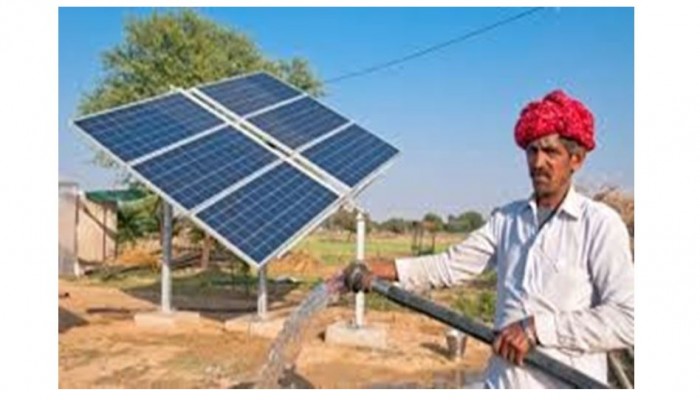An Economic vision for Rural India- What path should India take?
- In Economics
- 04:43 AM, Oct 02, 2018
- Dhiresh Kulshrestha
India is fighting against increasing levels of population, a vicious circle of poverty, hunger and rural unemployment problems/ issues since independence. The economic growth in India can be attained when both urban and rural economy go hand in hand. However India is suffering with a vital gap between the two and it can be bridged by investing in rural infrastructure. Although utopian society is the ideal society and its hypothetic school of thought, but it is not adoptable in India due to its high level population and number of ill issues. As majority of India’s population is living in rural India.
The basic impact of rural development is, increase in the income of rural household’s, to more than one income activity, whether salaried or non-salaried, agricultural or non-agricultural, it is not anomalous that the access to public infrastructure will also affect household labour assignments in rural Bharat.
The successive economic reforms have focused on the rural development through better transportation, market linkage and agricultural, development of solar and wind energy, agro- based industries and its allied sector which is mainspring of Indian economy. As these are the basic components of overall economic development of rural Bharat.
So, as per the study, an economic system is composed of people, institutions and their relationships. Economic system addresses the problems of economics like the allocation of the resources. Economic System is an organized way in which a state or nation allocates its resources and distributes goods and services in the national community or society. An Economic system is divided into three major components:
- Capitalism 2. Socialism 3. Mixed Economy
Capitalism (Market Economy):
Capitalism is an economic system in which the means of production are privately owned and operated for profit, usually in competitive markets. An economic system in which investment in and ownership of the means of production, distribution, and exchange of wealth is made and maintained chiefly by private individuals or corporations. It was the same condition as mid-18th century after breakdown of serfdom and feudal systems in England when capitalism had been started and led to development of free markets and increase the production.
ADAM SMITH called “the obvious and simple system of natural liberty” also written in his book “Wealth of Nations”1776). Father of economics analyzed the relationship between work and the production of a nation's wealth. Capitalism intends to certain restrictions, individuals (alone or with others) are free to decide where to invest, what to produce or sell, and what prices to charge. There is no natural limit to the range of their efforts in terms of assets, sales, and profits; or the number of customers, employees, and investors; or whether they operate in local, regional, national, or international markets. In Capitalism Economy the socialism will be suffered critically. It impact on the society as under:
- Downfall of work ethics
- Free Market + Self Interest of Capitalists
- Encourages inequality in a society
- Business lobbying with government
- Monopolistic tendency
- Human resource exploitation
- Results in great disparities between income of people owning the capital resources and others.
There is something ironical here. A capitalist economy has been described ever since Adam Smith’s time as having flexible prices which clear all markets. In fact a capitalist economy is noting of the sort. It has no price flexibility at all for given money wages, in conditions of oligopoly; and conditions of oligopoly go back a long way in time.
Socialism (Planned Economy):
If we see the component of economic system socialism then we find in the socialism as the collective ownership and democratic control of the material means “Production by the workers and the people.
Socialism is a term applied to an economic system in which property is held in common and not individually, and relationships are governed by a political hierarchy. Instead, individuals in positions of authority make decisions in the name of the collective group. A primary goal of socialism is social equality and a distribution of Wealth based on one’s contribution to society and an economic arrangement that would serve the interests of society as a whole. On the other hand a socialist economy is supposed to be a planned economy which eschews price flexibility. And yet the old socialist economies systematically avoided over-production crises precisely through price-flexibility for given money wages. This only underscores the poverty of the intellectual stereotypes that are used for understanding these economies.
Socialism and Communism Concept:
The difference between Socialism and Communalism is that communists directly oppose the concept of capitalism, and communism is an economic system in which production controlled by private interests and then it is also opposed the democracy. Communists are not in favor to capitalist economic systems as well as mixed economy.
The current Government of India has been adopting an economic system which is a mechanism to deal with the production, distribution and consumption of goods and services in a particular society. Socialism has collapsed over large tracts of the globe. Where it still exists, the economic regimes have undergone considerable reforms. Not surprisingly therefore the old socialist regimes are objects of much disparagement these days. While capitalism, understandably, has a vested interest in promoting such backbiting, the Left opponents of capitalism continue to remain too shell-shocked to counter it.
India is adopting the mixed economy concept and gradually Indian think tanks are opening the door for Open economy through liberal policies, Make in India, and other flagship program of our present federal government. India’s opportunity in a multi conceptual world’, this article emphasized that India’s extraordinary achievements – despite its complex federal governance structure and highly pluralistic and diverse society are made possible through the philosophy of 'Together with all, Development for all' (Sabka Saath, Sabka Vikas). The government of India is focusing on development of rural infrastructure, roads, and backbone of Indian economy agricultural sector. The study advocates the new initiatives taken by government of India in the favour of rural development like ‘Har Khet ko Paani- Har Haath of Kaam’ and ‘National Bamboo Mission’ for doubling the income of farmer’s in India and other flagship programs for rural development as inclusive growth in India.
Author invites your any valuable comments and suggestions: drdhireshkulshrestha@gmail.com
Disclaimer: The opinions expressed within this article are the personal opinions of the author. MyIndMakers is not responsible for the accuracy, completeness, suitability, or validity of any information on this article. All information is provided on an as-is basis. The information, facts or opinions appearing in the article do not reflect the views of MyindMakers and it does not assume any responsibility or liability for the same.







Comments